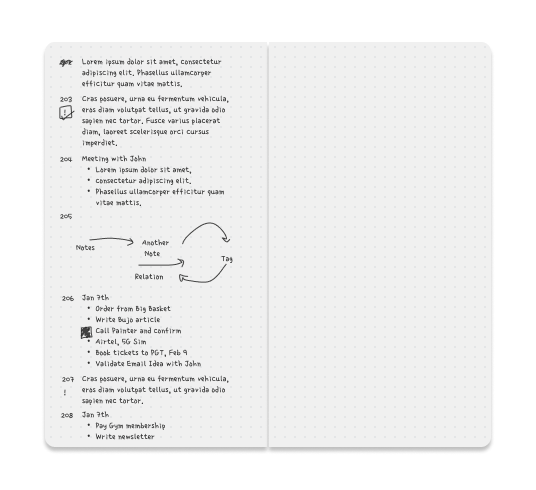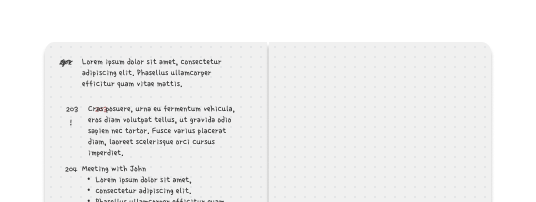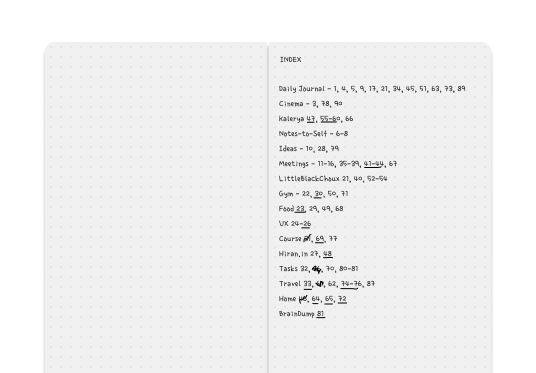For the past five years, I have been using a notebook as my primary tool for productivity and thinking. Despite experimenting with various digital tools such as to-do apps and iPad writing tools, I have found that using a pen and paper is still the most effective way for me to get my ideas and tasks out of my head. The format I use is a mix of a commonplace book and a bullet journal.
If you are new to Bullet Journal, the best way to learn is by watching this short official video. It's straightforward, well-explained, and only takes 5 minutes! For more, read the blog or The Bullet Journal Method book by Ryder Carroll.
Over the years, I've experimented with various analog journaling variations, including many templates recommended by other BuJoers, but what I found most effective for me was a single-color layout and using it as a rough note rather than tessellating. The function takes precedence over form! Here is how I do it:
Stick to a One-Column Layout
I don't spend much time on page layout. I use a 20% margin on the left and begin to write. This design makes the content easier to read, and the margin offers room to indicate any supplementary information, such as importance or status. I also use any pen that is available for thinking, treating it like a rough note and not paying attention to how it looks.

Keep it with you, always
I always make sure that my journal is accessible and prepared for use. It's always on my desk, in the meeting room, and in my bag. I currently carry my pen clipped to a travel-journal notebook I purchased from an Indian company called Neorah.
Numbered notes, not page numbers

Depending on the situation and my mood, I do rapid logging, sketch, and write ideas. Instead of numbering pages, I number individual thoughts, which I started doing because I could not find any good notebooks with printed page numbers. But I found this atomic numbering effective as I could locate notes faster and update them.
Use Index Page Actively
The index pages in the Bullet Journal system are the most useful aspect I have discovered, and they are one of the things that make my analog systems operate more effectively. In my index, I track note numbers (as I don't have/use page numbers). I don't index or number my thoughts while I'm writing the notes, I typically complete that later in the day. Additionally, I indicate next to notes whether they are important, a task, or something I need to move to my working notes as I work.

Do a Periodic Review
I try to read the notes and reaffirm their significance most often on the weekends. I strike down the number in the index and next to the note, not the entire note. I occasionally rewrite the note to make it clearer and remove old notes from my index. I confirm that there is an ongoing migration, validation, and update. This is necessary to prevent the content from becoming cluttered.
Continuous Knowledge Migration
Instead of moving notes from one finished bullet journal to the next, I perform my periodic review and make sure that notes are updated, transferred, or deleted. Notes, if transferred to my working note, would have more generic context, links to the sources of inspiration, and information about those things. For my digital garden, these are "new seeds." (More on this in a future newsletter)
Use other tools
I don't force myself to use analog exclusively. I would prefer to use other tools if they could help me accomplish my goals more effectively. Instead of using a future or monthly log, I use Google Calendar. I prefer Habits for habit tracking and Toggl for time tracking, if necessary. (Check Tools of ChoiceTools of Choice
### Devices
I utilise a MacBook Pro for office tasks, without delving into our tech and communication stack. We primarily rely on [Figma](https://www.figma.com/) for design ideation and UI creation... Page for apps I use.)